 They say promises are meant to be broken. Some of us believe it to be false as it defies the very definition of a promise. Others see its sense and lean in to it. It only entails that you should never leave out words that you know for yourself you cannot keep. There will be repercussions, regrets, and inevitably, downfalls. An example of a huge promise made that has been broken, or should I say, will be broken, is that of Google’s. The world’s most esteemed friend when talking about quick information delivery on the latest trends ranging from food, fashion, lifestyle, world news, breakthrough technology that currently centers on flexible and wearable tech, and etcetera is up for questioning. Eight years ago, the biggest search engine in the world announced that they will not be allowing banner ads be displayed upon their homepage and results pages, EVER. They lived up to expectations and maintained this stand for that amount of time but gradually dwindled. It’s not so perfect after all. It could be because of private company reasons that pushed them closer to the end of the line and now has to fix things up before the big fall. Yet again, a promise has been broken and so have the trust-filled hearts of Google’s supporters. If it loses them, it will struggle. But before all that, what’s the story anyway? Synrgy posted a screenshot of an enormous banner ad for Southwest Airlines displayed upfront the search results when the latter company was used as a keyword. With Google’s promise laden by previous vice-president, Marissa Mayer, and now this, you just can’t help but question the rest of what the biggest search engine has failed and will fail to fulfil. A Google spokesperson expressed that this was an experiment, something temporary at least for the time being. The banner ads including that of Southwest Airlines are posed in the US market alone. The search engine giant’s ambiguous response has not tune down the inquisitive minds of the world as a reaction to this act of negligence. Will Google really break the promise? Or has it turned into yet another greedy giant, engaging itself into the other sectors of technology where it is not at all in line with? Hello, Nexus 5 smartphone? Then again, let’s give Google the benefit of the doubt. It might be on to something of great volume sooner in the future, and altogether preserving the trust of its many supporters after hearing this news. Otherwise, Google might be next to one tech giant, thrown off the stage and into the crowd. It doesn’t really matter if it’s trivial or with ample value. A promise made should never be spoken aloud but instead done with action and utter diligence.
 BlackBerry’s BBM is indubitably an app known to many. This is utterly unexpected though absolutely real, considering the relatively unimpressive performance of the Canadian smartphone manufacturer over the past 3 years and the fact that it only accounts to a minute percentage in the smartphone market share across the globe. After quite a long wait, BlackBerry has finally announced that the BBM will be available for both Android and iOS devices. The previous delays were brought about after an influx of Android devices had used a leaked version of BBM that caused the app servers some issues. Nonetheless, because it’s so popular, there were already 6 million people who signed up even before the app was launched in non-BlackBerry app stores. Just 8 hours after the app has been announced, over 5 million people had already downloaded the app. And just within 24 hours, more than 10 million users had downloaded this cross-platform mobile app. As of the moment, BBM is the top free downloaded app in App Store from the 1,000,000 various apps in its compilation. As for Google Play, the numbers still read as zero downloads; perhaps once the numbers are updated, BBM will shoot up the charts. A number of app developers all over the world tried to replicate the concept behind BlackBerry’s BBM in the form of WhatsApp, LINE, Viber, Voxer, Kakaotalk, and a lot more other messaging apps but nothing still beats the original. The mobile messaging service that the Canadian company offers is simply like no other. Though, the concern of many analysts is that if only BBM were released 2 years ago, maybe, BlackBerry wouldn’t be in the struggling position it is in today. Maybe, its products still haven’t disappeared in the phone line-ups of wireless carriers, shelves of tech shops, or listings of online mobile stores if it were able to do this so much earlier than today. Anyway, to become a BBM user, first, you have to download the app (of course). Then, once you have installed the app, open it, and key in your email address. Although you already have the app in your device, you can’t be able to use it just yet because you still have to deal with the virtual queue to reserve your spot in the app registry. Once you reach the front of the virtual line, you will be receiving an email from BlackBerry; then, you can start using BBM. According to the company in its blog post, “If you didn’t sign up in advance, don’t worry—we are focused on moving millions of customers through the line as fast as possible.” And if you’re concerned about the cost of having this on your device, don’t worry because it’s completely free. It isn’t anymore an unknown fact that BlackBerry is facing hardships keeping the company adrift, but as of now, it remains unclear on what kind of rewards will the company reap from making BBM available for both iOS and Android. Is the app going to turn into a solid revenue-making body? We still don’t know. In any case, with all the successes and downfalls of BlackBerry, perhaps the BBM will be its legacy—the masterpiece that will carry its name throughout the end of time.
Why does almost everyone make fuss about the newly, freshly popped Apple platform, iOS 7? You should run through each feature, and you’ll probably know why. Well, basically, that’s because for the first time around, Apple’s mobile operating system has been made as a part of the phone—essentially.
Before, if you happen to be one of the people who patronize Apple products, you might have noticed that the mobile operating system running on your device isn’t much of a big deal—like it serves as some kind of an add-on only. As the interface of the platform has been tweaked, Apple iDevice users know how much of a big deal this is. Yeah, talk about the control center. Just look at how far the aesthetics of iOS 6 is from that of iOS 7.
Wouldn’t you love that revamped interface? Not to mention, another iDevices—yes, not one, but two—have once again stolen the limelight from that of Apple’s competitors. And let’s give the spotlight to the iPhone 5S with its feature—the highlight of the device—the Touch ID. Now, you can have your phone securely with its biometric security. Just be cautious on registering your prints, or some might use them when you’re asleep. Better if you can have crazy ideas so that no one would dare to access your phone while you are dozed off. Perhaps use your toe’s fingerprint! Hah! Anyway, Touch ID is a great technology and it is pretty neat. Lately, a lot of reviews have revealed that there are several hidden tricks on iOS 7. And I say these disclosed nifty tricks haven’t failed to surprise the masses. Well, do you think that we’re done with the tricks of iOS 7? Think again. This time around, let’s go nowhere but on your iPhone’s keyboard!
Tweaked Keyboard to Your Needs
Check out the app you are in. Perhaps it’s Twitter. The iOS 7’s keyboard displays then the keys that you will most likely need. Now, you don’t have to tap all the way and find the hashtag sign on the pool of symbols, and neither do you have to mention longer than 10 seconds, because the iOS 7’s keyboard has got you covered. It will display the two most-wanted symbols at the left-bottom part so you could tag and mention in a jiffy.
Where Did The ‘.com’ Key Go? When you’re typing on the address bar, case in point it’s Facebook.com, it would definitely be much easier if there is already a key for the domain name extension. But when you look at the keyboard, you can’t find it anywhere. Now, you wonder where it went. Don’t fuss; it’s still there. You see that period? Yes, the dot. Tap and hold it, and lo and behold, there goes not one but all kinds of domain name extensions! Type Punctuations in a Jiffy! Tired of the “tap 123 > choose punctuation > tap the ABC key to get back” routine? Well, you can react faster with this new iOS 7’s Keyboard feature. Just tap and hold the 123 key; wait for it, and there goes the punctuations popping! Don’t remove your finger yet. Simply slide your finger to the appropriate punctuation, then release! Hello, exclamation point of excitement! Now that you know these tricks, you can now type faster and better with your smartphone! Thanks to iOS 7’s Keyboard!
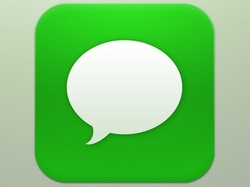 One of the most anticipated apps when you update your iPhone’s platform to iOS 7 is the iMessage. This is the app where all iPhone users chat and call for free as they get connected to a Wi-Fi or if they have a mobile data connection. So, if you and your friends are all iPhone users (see you later, Android users), then welcome to the club! Don’t worry, even if your iPhone is not the latest iPhone 5S, as long as it has it has the iMessage app, you can pretty much do well. Now that you are using the iMessage, here’s a good way to pull a prank to your friends with the use of iMessage:
Have you noticed the iMessage dot indicator that lets you know that a person is typing something? It shows that the text is still in progress. This is one of the perks of using iMessage over text messaging, because you will know right off the bat if someone is replying or ignoring you—not to mention you see them online. And if someone is typing in progress, you can’t help but stare into the three dancing dots until the text message finally … … … finishes!
And then you can read the seemingly novel of your friend with all your heart’s content. Talk about the advices, and… oh, spare me from lessons. Anyways, did you know that these dancing little dots can be the center of a prank? Do you want to know how? Then read on! First off, you must visit the page: http://miscellaneousmischief.com/textinprogress.html using your smartphone—yes, your iPhone. This is the Miscellaneous Mischief Web site where you can download the three dancing little dots for the prank. As said on the first step, save the .gif file to your iPhone’s Camera Roll by doing “tap and hold” until a message appears, prompting you to save the image. You need not worry if the picture doesn’t move upon downloading. Once you have hit the send button on the iMessage, the .gif file will be animated. Okay, so you have saved the picture already? Now, you’re all set to prank your friends! Better if you start with a cliff-hanger message like: “Hey! I don’t believe it. I saw *insert a name of any person or anything that never fails to catch his or her interest here*! And guess what happened!” Now, you can copy and paste the photo to iMessage and send it to your friends. Then watch their reactions, and start laughing as much as you can! Hah! Be the first to know among your friends, and don’t fall into this trap. Do you want to know how to spot if it’s a prank or not? Have you noticed the first typing bubble at the top? It’s different at the bottom, right? The first one is a prank, while the second one is real. So don’t fall victim to this prank! It’s not April Fools but it’s fun to pull a prank from time to time. Have fun! ABOUT THE AUTHORCamille YoungCamille is a BSIT degree holder and a Tech Blogger who loves blogging about latest technology and gadgets that are more than meets the eye. She is currently working as an SEO writer/content marketer at Ecell Global.
 One of the most innovative features of Apple’s latest flagship phone, the iPhone 5s, is the Touch ID. It is a fingerprint identity scanner for the user to unlock his phone in a more hassle-free and cooler fashion. Additionally, the said technology provides a higher degree of security, especially in making purchases through one’s mobile phone online. The fingerprint scanning technology debuted in the iPhone 5s is in itself a breakthrough in the mobile industry, although the concept has already been used in a lot of industries for their biometric systems. Nonetheless, we can say that this technology revolutionized how one person can access his smartphone. Gone are the days when we still have to remember a set of alphanumeric characters as our password just to begin fiddling with our handheld devices. In light of the latest development in mobile security, the FIDO (Fast IDentity Online) Alliance, which has a calling to strengthen online security, says that it expects to see similar fingerprint-based security in Android devices within the period of six months or so. According to Michael Barrett, the president of the organization, “The intention of FIDO is absolutely that it will allow consumers to have access to mobile services that they can use with very low friction, while keeping good security.” The giant tech company, Google, has signed up to help push this cause. It supports the vision of FIDO. As of now, Apple still has nothing to do with the organization. Barrett is hopeful that Apple eventually joins the FIDO Alliance. This way, the competence of mobile and online security will be more enhanced. On another related note, there are speculations that HTC, the Taiwanese smartphone manufacturer, will come up with a handheld device that will be integrated with a fingerprint scanner as well. This upcoming device is said to be named HTC Max. However, unlike the iPhone 5s, which has its fingerprint scanning mechanism on the lower anterior portion of the phone, the Max will have its scanning device at the upper dorsal portion, between the SIM slot and its camera. Instead of using one’s thumb in the authentication process, the Max will be scanning the forefingers of its users. Although HTC has not yet confirmed about the functions and tasks of the integrated technology, analysts perceive that it will be utilized as with the 5s. It will be used to unlock the screen and authorize online purchases. There is no formal date set just yet on its launch, but there are hearsays that it is expected to be released in the second half of October. After all these developments, mobile security will never be the same. Soon enough, the phrase, “Everything at your fingertips” will be literally realized. This is a testament on how technology makes life so easy. ABOUT THE AUTHOR Drei DavidHe is your typical jack-of-all trades kind of guy who loves to try new sorts of things. If it's something that catches his interest, he'll definitely make time for it, especially if it's about tech stuff and whatnot. He is currently working as an SEO Writer/Content Marketer at Ecell Global.
When talking about being techie, this usually means buying high-end gadgets that come with hefty, stinging price. These nifty gadgets sure are bank breakers that can squeeze your pocket for the last penny. But when you consider the convenience they bring, spending a pretty penny is totally worth it.
But do you always have to splurge so much just to maintain your techie-ness? What if I tell you that you can be both techie and thrifty simultaneously? Check out these awesome budget gadgets that come with ridiculously reasonable and unbeatable prices!
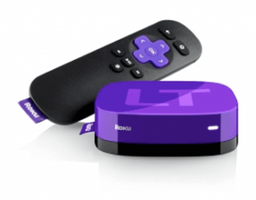 #1: Roku LT
Hurray for the new TV! What do you say we get the gotta-have 999 channel cable? Are you prepared how much will it cost you? And with seeing the price tag, all the thrills just died instantly. Good thing is that Roku streaming player offers you an early Christmas bonus! As you connect this media box to your telly, it will offer an access to plethora of movies, sports, music, news, and other entertainment channels from all sorts of online service apps! You may also like to get an extra subscription so as to access pay-per-view, sports, and movie channels! For only £39.99, this is but a neat one.
 #2: Bush Hi-Fi stereo headphonesItching to ditch that pair of mobile earphones that is bundled with your phone? Then you might as well like to resort to stereo headphones! Wait, what? Uh, how much would that be? Well, you wouldn’t scratch your head with Bush Hi-Fi stereo headphones since it only costs £3.99! Oh, no, that’s not a typo. You can actually buy headphones for only £3.99. This may not be the sturdiest headphones, and neither is it the best sounding, but it’s definitely a good reason for you to ditch your classic earphones that came free with your phone.
 #3: Samsung Series 3 Chromebook
When it comes to computing device, the more it can offer portability, the more it provides convenience. And so, desktops got slimmer and lighter as the years pass by, and there goes also the innovation of laptops made especially for people with on-the-go persona. But as they come more compact, they become pricey—or do they? Introducing, the Samsung Series 3 Chromebook! What’s the catch with the price of only £179.99? Well, this laptop runs neither Mac nor Windows; it runs Chrome OS. And that means, almost all the applications can only be accessed from the cloud—yeah, stored over the internet. You then would need to be connected to the internet to make the laptop functional. But, not to worry since Google is now working on offline functionality to the Chromebook. Still, geared with 2GB Ram, an 11.6-inch LED screen, and webcam, you’re going to love this Chromebook with its unbeatable price.
 #4: Vodafone Smart IIIThinking of budget phones almost always resort to what we call “dumb phones”. Yeah, well who wouldn’t? They are the cheapest of all phones anyway. But would you believe that there can be a cheap smartphone too? Check out this Vodafone Smart III! And would you also believe that this handset only costs £85? Packed with a 5-megapixel shooter at the back and runs the Android 4.1 Jellybean, you’ll think it’s too cheap and too good to be true! It doesn’t always mean that it comes with a price just to be a certified techie. Sometimes it’s good to buy gadgets that are cheap but serve their purpose that are utterly amazing.
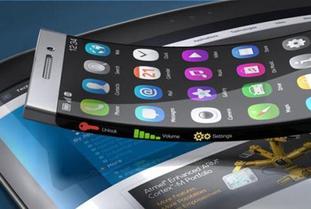 There’s always something new to the table with technology. You were not yet able to get tired of the recent innovation, and yet something is already up and coming to top it off. One of the latest breakthroughs there is this 2013 is the Touch ID, a fingerprint identity sensor, integrated in the iPhone 5s. It provides a hassle-free, cooler, and more secure access on one’s device. People kept talking about it for quite a while, and before people even got the chance to get bored on the topic, hearsays came here and there about the flexible screens to be released by the two South Korean tech giants: Samsung and LG. In fact, for LG, it has announced through a press release on May 20th that it will show off a flexible OLED and shatter resistant screen that measures 5 inches, and the technology will be made available to smartphones precisely in the fourth quarter of this year, perhaps before the end of October. The screen is going to be 1-mm thick, obviously bendable, and heat and damage resistant. As said, Samsung, which has overtaken Apple in quantity of smartphones shipped, is also working on a flexible display, but the said company is still unable to boldly say on when its bendable smartphone will be available on the market, while LG has already given a tentative date on when this spectacular technology will be made available to its consumers. Who knows, this might be the answer for LG to overtake its rivals in the smartphone wars. There is a big chance that LG will pull this off because as one of the leading manufacturers of flat-screen televisions, it has already launched the world’s first curved OLED display TV back in 2012. The product was so stunning that it bagged a Red Dot Best-of-the-Best Award in July 2013. Even before the date of release, some people speculate that the flexible LG smartphone will be named the LG Z. There are also rumors going around that the smartphone with the bendable display is already in production and will be launched a week or two from now. Having all these said, a smartphone with a flexible, OLED display will not be entirely flexible per se. This is because other essential electronic parts like the battery and the motherboard are not yet bendable. With this technology incorporated into future handheld devices, there is only one thing certain: the display will be virtually unbreakable. In due time, when all other bits and pieces of smartphones have become flexible, we can be able to get hold of a phone that can fit in any tight space and is absolutely indestructible. And this we have to keep in mind: technology brings out a world full of possibilities.
 Samsung has unveiled its new technology, the Samsung Galaxy Gear Smartwatch. As what the "�Smartwatch"� word implies, it is made technically smarter than any timepiece. But itâ's not the first technology of its kind. There goes the iPod nano watchband that was launched by late of 2010.
iPod nano watchbands were discovered as the late Steve Jobs said that one of the Apple board members tried to wear the nano as a watch. And since then, the wristbands came in all shapes and sizes to clip the nano and make it a wearable technology.
Now, going back to Samsung Galaxy Gear Smartwatch, does it have anything better to offer? Let'�s hit the list of reasons on why you should buy this smarty timepiece or why you shouldn'�t buy this piece at all:
| PROS
It is packed with a 1.9-megapixel camera so you could snag pictures or take a video anytime, anywhere.
| | | CONS
The 1.9-megapixel camera takes low-quality photos "expected" and it's a bit awkward to point.
| | | It serves as a portal to your smartphone so you could receive messages and take or make calls.
| | | Taking or making calls through smartwatch is neat, but other apps are flat out lame.
| | | It comes in six funky colors.
| | | It's bulky as you wear it.
| You can pause your phone's music and video right off the bat with the smartwatch--freeing you from all the troubles of toggling and tapping on your smartphone. | | | Battery drains easily--requiring you to keep your portable chargers close always with you. | | It has a pretty neat display.
| | | It displays only limited notifications.
| | It has a nifty way of telling time and a wearable speakerphone.
| | | It can be a speakerphone and has an accelerometer to count your steps even, but it has no heart rate monitor for workouts.
| 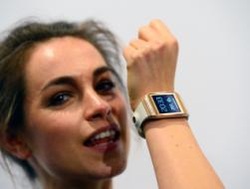 More on CONS:
It can only be paired to the Galaxy Note 3 and 2014 edition of the Galaxy Note 10.1 tablet at the moment. It costs a serious hefty $300 and adds up to the pile of roadway distractions.
Need I say more? It goes to show that the Samsung Galaxy Gear Smartwatch brings more inconvenience to people than convenience. It’s primary purpose is supposed to free people from all the troubles of pulling out their phones out of their purse or pocket, and just simply check the notifications right on your wrist. But, this doesn’t sound that it is a necessity to most people. It doesn’t always mean that if they can make it, they should do it. Sometimes, it’s better if we build something that can cater to our needs and make the best value for one’s money. A writer from Wired, Christina Bonnington, said that they are still on their infancy. So, I guess we can forgive all the flaws and shortcomings of this device. Let’s hope that the second gen has much more to offer than this one.
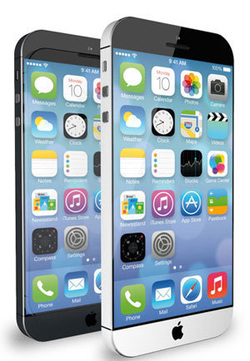 After Apple’s launch of its newest models to the iPhone collection, there are a number of consumers who were downright disappointed. Simply put, their expectations of Apple’s brand new flagship phone, the iPhone 5s, weren’t met. Yes, the fingerprint sensor and the camera upgrades are commendable, but those enhancements just aren’t enough to come up with an almost perfect phone that can satisfy a consumer with an exceedingly discriminating taste. Henceforth, the only hope for the ideal phone has to be with the iPhone 6. And these are the features that we wish it will have. 1. A bigger display. The first models of iPhones had a display no more than 4 inches. And after the iPhone 5 had an upgrade in terms of screen size to exactly 4 inches diagonally, we still aren’t satisfied. Well, looking at the bigger picture—literally and figuratively—the iPhone 5s has one of the smallest displays among the high end smartphones on the market. So, it will just be a relief for a lot of people if Apple will finally release their own phablet. 2. Water resistance. Water is, among the majority of smartphones, the greatest enemy of consumer electronics, bar none. Even just a dab of moisture seeping through the insides of a handset can fry its circuits. This is already a problem of the past for the Sony Xperia Z Ultra, for it features water resistance of up to 30 minutes under 1-meter-deep water. In due time, even smartphones can be used to capture the breath-taking sceneries under the sea. 3. Solar charging. Ah, battery life—the greatest drawback of smartphones. Bluntly, the most powerful device is useless without a source of energy. So, Apple must do something to eradicate this problem. And is there a better concept than harnessing the power of the sun? With solar panels at the back of the next iPhone, you’ll never have to bear with the disruptions in your smatphone businesses because of inadequate energy. If calculators have it, why can’t the iPhone 6? 4. Near field communication (NFC). The NFC feature is rapidly gaining fame from mobile consumers. With it, exchange of information is made much easier by just tapping a device to another or just bringing the two in close proximity. As time passes by, more innovators are finding more and more ways to take advantage of the NFC technology, and if Apple wouldn’t integrate their iPhones with the said technology, it might be left behind. 5. Infrared blaster. Wouldn’t it be great to finally turn “getting everything done with just a tap on the screen” into an absolute reality? Samsung Galaxy S4, HTC One, and LG G2 all come with a built-in infrared (IR) blaster, which can be used to control televisions. And if that isn’t enough, the S4 and the One have incorporated a built-in program guide, making it easy for viewers to find a program that they like to watch. Although we know that there’s always something new with technology, I personally think that these features listed above are enough to give rise to the perfect phone. Even if it won’t take that much long till we are dissatisfied again, leaving us to air out our wants incessantly, at least, we get to share our ideas and contribute to the betterment of the tech companies that manufacture the smartphones that we treasure.
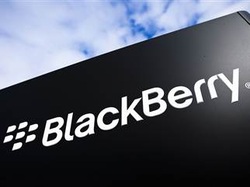 BlackBerry Ltd. is a Canadian telecommunications and wireless equipment company that developed the BlackBerry brand of smartphones and tablets. The first BlackBerry device that it released is an email pager back in 1999. And after that, it has managed to be a well-known brand of handheld devices. Most smartphone models, as we know them, feature a physical QWERTY keyboard. It was just not so long ago that the company has manufactured touchscreen devices. Back in January 2010, BlackBerry dominated the mobile market share with 43% of the total number of smartphones used by individuals being the said brand. But now, the company merely accounts for 3.8% of the market share. There came out some news in the end of the 3rd quarter of 2013 that the company would be shedding almost 40% of its staff because of a $1 billion loss last quarter. These are already convincing enough evidences that suggest the downfall of the company. Perhaps a number of us are curious onto what happened to BlackBerry. From being the company that dominated the smartphone market, it now is taking measures for it to be acquired. For sure, in the middle of its success, something went wrong. This is what one analyst thinks: If only it were willing to embrace new hardware formats. Whenever you come to think of a BlackBerry device, you get to picture one with a QWERTY physical keyboard. The company had held on to that design for quite a long time, noting that the multi-key physical keyboard will bring the brand to glory. For quite some time, it became the preferred device of mobile consumers, especially those in the business sphere. But preferences change, and it took so long for Blackberry to acknowledge that touchscreen is the new “in.” This is why the brand itself has lost its appeal to the new generation of consumers. If only it had employed consistent innovation in its operating system. The operating system is the soul of every smartphone. It manages the hardware resources of one’s device, and it provides common services for computer programs. Personally, I found the first versions of the BlackBerry OS non-user-friendly. Given this, the succeeding releases of its OS only provided some incremental improvements on its predecessor. A revolutionary change must have been observed on the OS for it to stay ahead of the competition. If only it recognized much earlier that the desires of consumers are changing. One of BlackBerry’s fortes is its robust security features. This in turn had worked well for wooing the corporate world; however, the company failed to observe a paradigm shift from focusing on software security to bringing in some other user-friendly, innovative, and fun features. In the long run, it wasn’t able to gain the favor of the average consumer. If only it had been more outwardly open and flexible. Besides the mobile accessories that can enhance the performance of smartphones, apps also have the capacity to boost a device’s function as well. Because of the strict rules and regulations observed by BlackBerry around app development, it resulted in having its app store lag behind Apple’s and Android’s in terms of quantity.
|


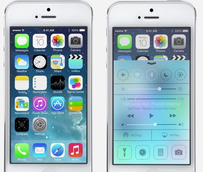

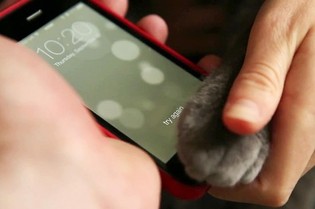
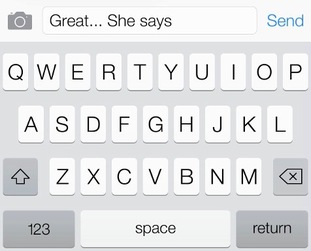



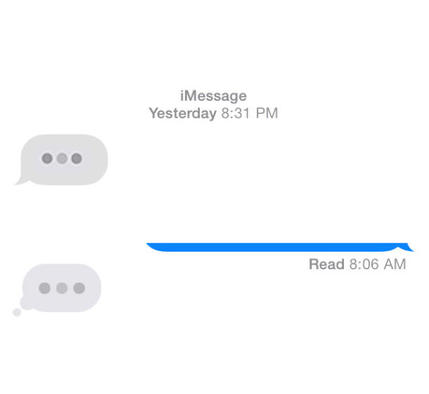







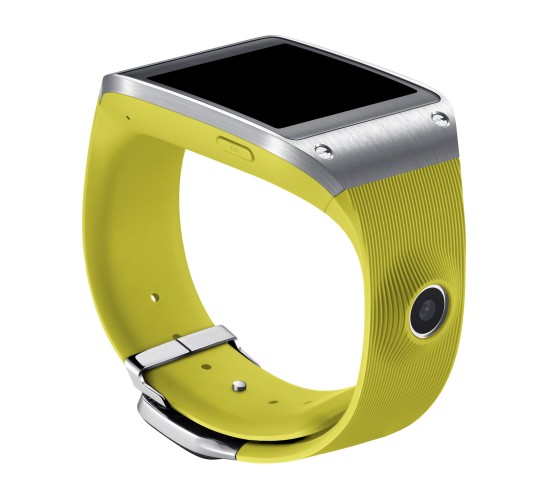
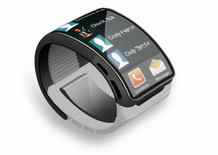

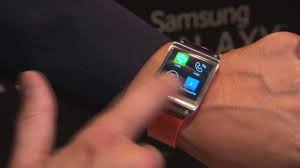

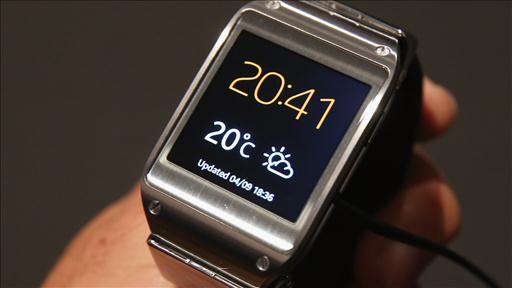



 RSS Feed
RSS Feed